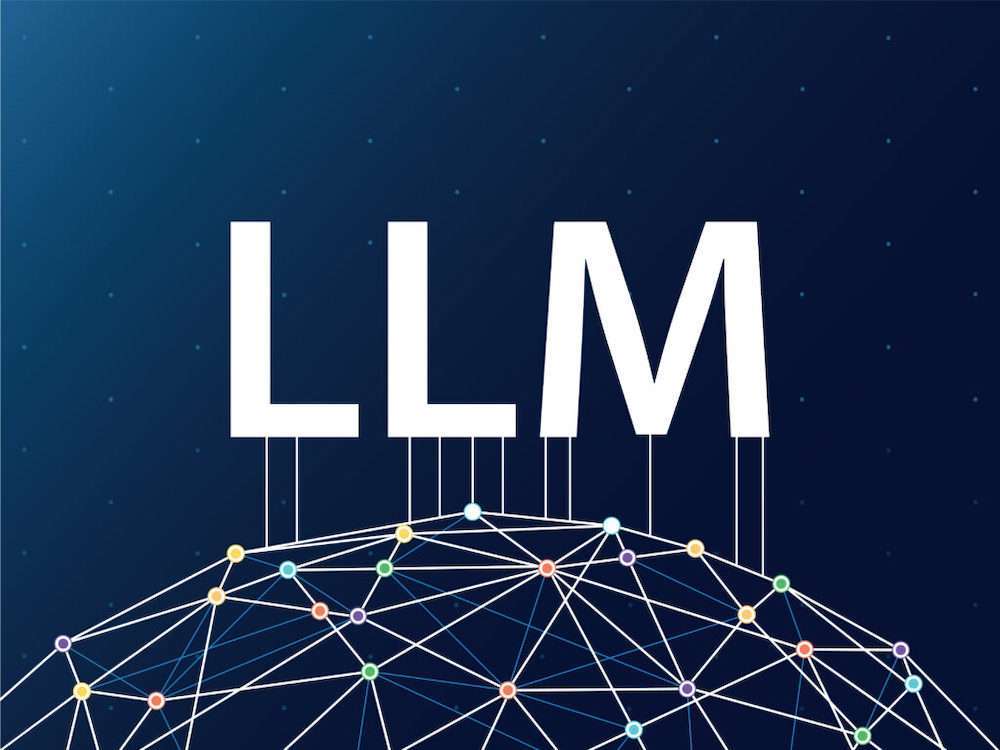Large language models (LLM) is a form of artificial intelligence (AI) software capable of identifying and producing text, among various other functions. These models are trained using extensive data collection, which is why they are referred to as “large.” LLMs are constructed on the foundation of machine learning, particularly utilising a specific type of neural network known as a transformer model.
To put it simply, an LLM is a computer program that has been provided with enough examples to enable it to understand and interpret human actions and language or other complex data. A significant number of LLMs are trained on data collected from the Internet, which can span thousands or millions of gigabytes. However, the quality of these examples affects the LLM’s ability to learn natural language, leading to programmers potentially selecting a more carefully curated data set.
Our article: See what LLMs can achieve is available here.
Promising technology with a few caveats
Using an LLM feature for online shopping has a few downsides. However, there’s a bright side to these AI models: when GPT teams collaborate with a search engine on an ecommerce platform, it can significantly improve the shopping experience for customers. Indeed, there’s a good fit for generative AI in the world of ecommerce.
The Harvard Business Review states, “For companies that manage to leverage GenAI effectively to achieve their business objectives, the benefits are likely to be substantial and rewarding.” Supporting this view, McKinsey predicts that the economic impact of generative AI could be between $2.6 and $4.4 trillion worldwide. This growth is anticipated to be fueled by applications like efficient content creation, optimised use of data, improved product discovery, AI-powered search features, and more streamlined hyper-personalised shopping experiences.
Large language models (LLM) loom large
Language models (and a specific use case, generative AI chatbots) are currently the hottest trend in the tech industry, with many ecommerce names hopping on the generative AI bandwagon, aiming for hyper-personalised consumer communication and website enhancement. By leveraging vectors, semantic comprehension, and individualisation capabilities, language models are spearheading a conversational AI transformation happening globally. Although there are some bugs to be fixed for practical success in the real world, businesses of every scale are diving in to find out if they can achieve significant success with this technology.
Integrating AI into your ecommerce
The main hurdle for online retailers is consistent: boosting sales by expanding the range of products and reducing expenses. Achieving effective use of artificial intelligence (AI) in online retail demands a smooth integration with the shopping experience (UX), and better still getting ahead of the curve by being able to anticipate each consumer’s needs before they do themselves.
So, can large language models be both effective and beneficial, or do they pose a risk to profits and not fit the bill? The brief response: big language models excel at specific tasks but fall short in others, and their capabilities could make them valuable assets for increasing sales in the digital market. Similar to other technological advancements, numerous executives are exploring how to leverage generative AI. However, if you’re among some business leaders, discussing generative AI and online retail might seem puzzling. After all, online shoppers have certain must-haves, such as the ability to view various buying options with 100% accurate, contextually relevant product details.
LLMs for customer product discovery
LLMs come into their own ahead of responding to inquiries. It is important to stress that consumers are not slaves to their needs as they are not slaves to their computer screens either. Consider your day yesterday, it wasn’t governed by purchasing decisions, it involved a myriad of actions you made, and for the average human being 98% of these had nothing to do with purchases, and 100% to do with life. The best use of LLMs is integrating the consumer’s needs, wants and desires into that life and not trying to push water uphill by trying to change them.
This is interpreted by simply allowing the LLM to identify the individual consumer’s needs, and anticipate – or predict, their imminent action to satisfy them, and by which we mean by phenomenal degrees. you, therefore, must consider communication – email and SMS, as the highest priority, and proportionately (way down the road) likewise when they do visit your site.
By combining a recommendation system to pick out relevant items with the ability to organise each SKU you have to the user’s preferences, an LLM could identify every product and deliver it at the right time in an easily accessible format. Moreover, by perpetuating this selection perpetually, synergy far beyond mere empathy with your consumer is established, to the point it becomes nigh on impossible for other retailers to get a look in.





